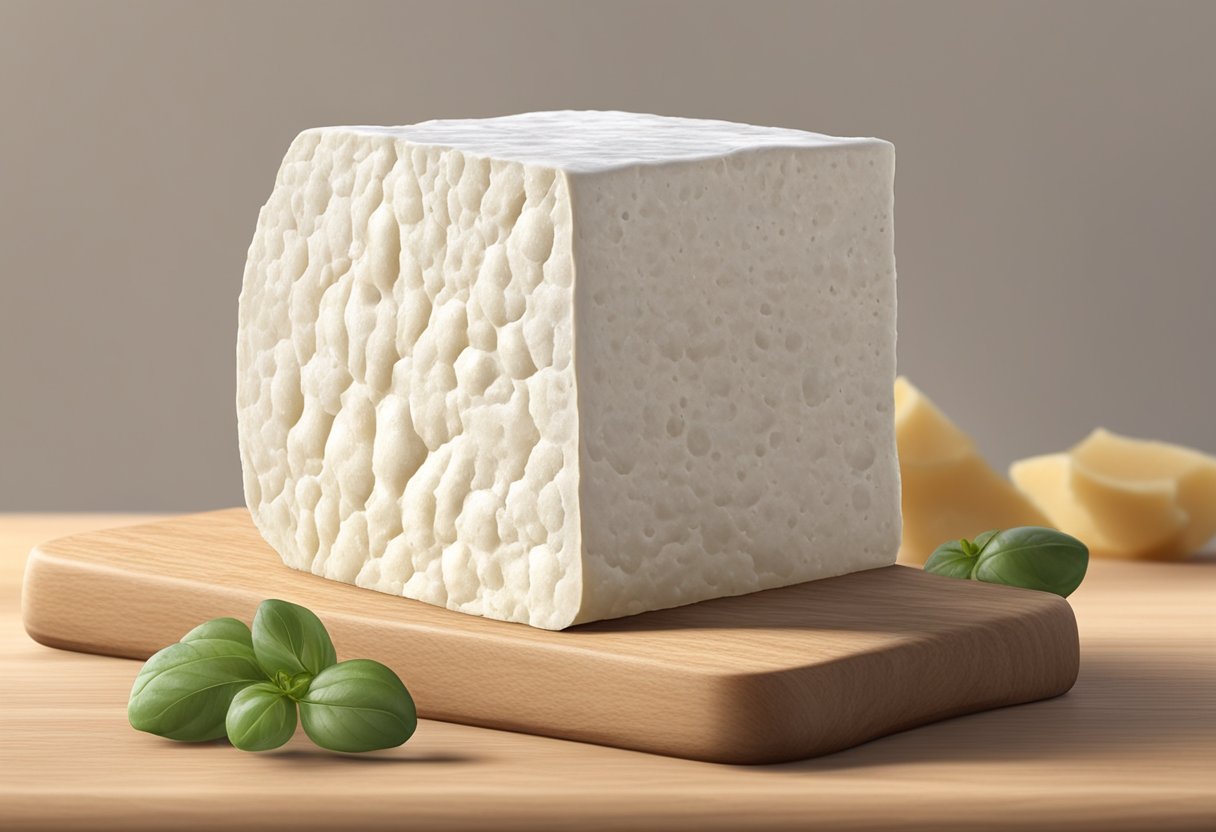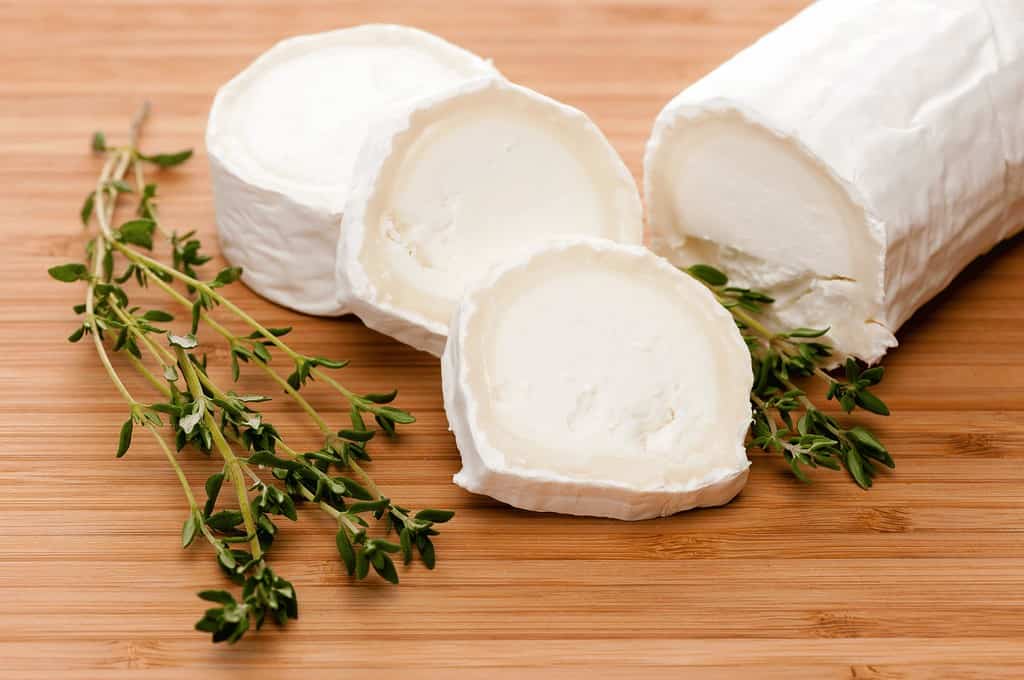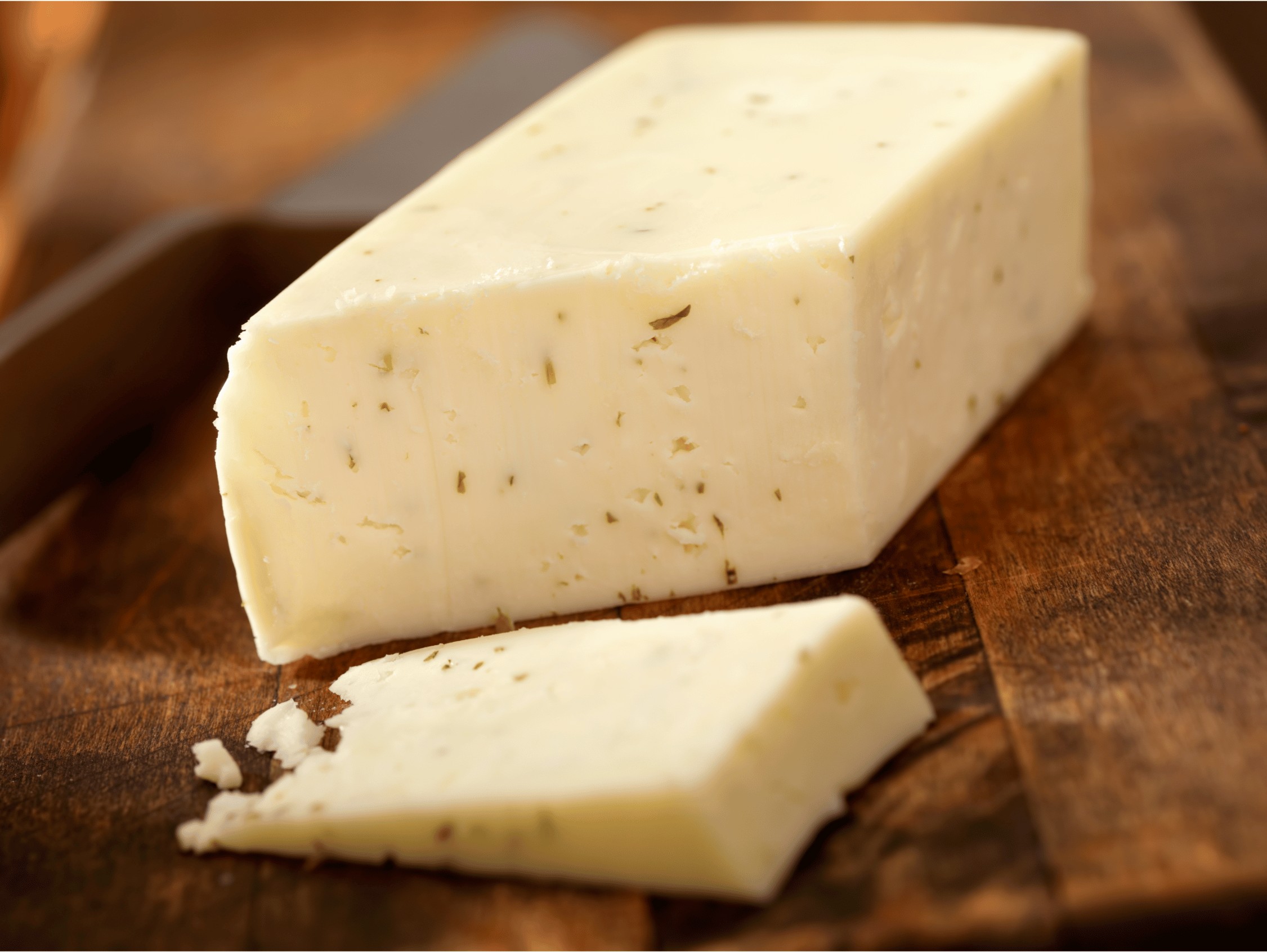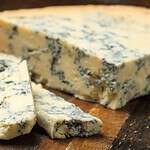Goat cheese, known for its distinct flavor, has a taste that can vary greatly depending on its preparation and aging process. Generally, it can be described as tangy and tart, often with earthy undertones. The fresh variety—commonly referred to as chèvre—has a creamy and spreadable texture, with a mild taste that carries a hint of lemon and a subtle goaty finish.

As goat cheese ages, it develops a more pronounced flavor profile. It can range from soft and creamy to crumbly with a robust taste. The environment in which the goats are raised and what they eat also contributes to variations in flavor. Feeding practices and locale factors can impart a range of savory notes to the cheese, from herbal freshness to a more intensified, piquant zest.
Key Takeaways
- Goat cheese has a distinct tangy and tart taste, with earthy flavors that intensify with age.
- The texture of goat cheese can vary from creamy and spreadable to crumbly, influencing how it can be used in culinary applications.
- Factors like diet and the production process affect the flavor of goat cheese, offering a broad spectrum of tastes to explore.
The Basics of Goat Cheese
Goat cheese, known for its distinct and robust profile, encompasses a variety of cheeses produced from goat’s milk. Compared to cow’s milk products, goat cheese typically delivers a more tart and tangy flavor. The taste of goat cheese can range from mild to sharp, influenced by factors such as aging, preparation, and the specific breed of goat.
The texture of goat cheese varies widely, but it is most commonly recognized by its creamy and soft properties, especially when it’s fresh. Some of the fresh varieties are spreadable and can be used to enhance the flavor profile of dishes, adding a smooth mouthfeel.
When we describe the flavor profile of goat cheese, it’s worth noting that it can also have an earthy essence, which comes from the various diets of the goats and the unique environments in which they are raised. This contributes to the goat cheese’s ability to complement the flavors in a diverse range of culinary applications.
Here’s a brief overview of goat cheese characteristics:
- Flavor: Tangy, mild to sharp, sometimes earthy.
- Texture: Creamy, soft, can be spreadable or firm.
- Aging: Fresh to aged varieties, with flavor intensifying over time.
- Production: Comes from processed goat’s milk.
Our understanding of goat cheese outlines it as a versatile and flavorful addition to the cheese family, adaptable to various recipes and suited to various palates. Whether used in salads, as a spread, or as a feature ingredient in cooked dishes, goat cheese imbues a unique flavor that distinguishes it from other cheese types.
Understanding the Flavor Profile
The flavor profile of goat cheese is distinctive, often described by its tangy and tart characteristics. We’ll explore its specific taste nuances and compare them to cheeses made from cow’s milk.
Taste Characteristics
Goat cheese possesses a unique flavor that can be attributed to various factors including the diet of the goats and the production process.
- Mild: Fresh goat cheese is typically mild in flavor when compared to aged varieties.
- Creamy: The texture contributes to its taste, often described as creamy and smooth.
- Tangy: A hallmark of goat cheese is its tangy quality, which can vary in intensity.
- Earthy: Some goat cheeses have an earthy flavor, which reflects the natural environment of the goats.
- Sweet: While not overwhelmingly sugary, a subtle sweetness can sometimes be detected.
- Tart: The tartness in goat cheese is prominent and adds to its refreshing taste.
Comparing Cow’s Milk and Goat Milk Cheeses
Comparing goat’s milk cheese to cow’s milk cheese reveals distinct differences:
| Aspect | Goat Milk Cheese | Cow Milk Cheese |
|---|---|---|
| Flavor | Tangy, tart, distinct | Less tangy, often milder |
| Texture | Ranges from creamy to crumbly depending on age | Generally creamier, especially in fresh forms |
| Aftertaste | More pronounced with a tart finish | Tends to be subtler, with a buttery finish |
- Fresh Goat Cheese: It is known for its bright, lemony tang and can have a more pronounced flavor due to the presence of fatty acids like caproic, caprylic, and capric acid.
- Goat’s Milk Cheese: Offers a variety of flavors from sharp and robust in aged varieties to gentle and subtle notes in fresher offerings.
- Cow’s Milk Cheese: Often has a sweeter, less tangy taste, although this can vary greatly depending on the type of cheese.
Texture Variations

Goat cheese comes in a wide variety of textures, ranging from soft and spreadable to hard and crumbly, each with its own characteristics.
Softness and Spreadability
Fresh goat cheese, often known as ‘chevre’, is prized for its softness and spreadability. Right out of the package, one can expect a creamy texture that is moist and easily spread over bread or crackers. It’s typically not aged, which contributes to its delicate and smooth consistency. Soft goat cheeses are ideal for those who enjoy a gentle, spreadable texture that pairs well with a variety of flavors.
Aged Varieties and Texture Changes
As goat cheese ages, its texture transforms significantly. The moisture content decreases, leading to a harder, more crumbly consistency. With time, the proteins and fats within the cheese condense, which can produce varied textures across different aged variants:
- Semi-hard varieties: These may still have some slight creaminess but will hold their shape better than fresh cheeses.
- Fully aged cheeses: These can become quite hard and may even be grateable. Their texture is decidedly firm, often with a flaky quality that can be savored on its own or used as a garnish on dishes.
Throughout its aging process, goat cheese develops a characteristically denser and drier texture that appeals to those who favor a more robust bite.
Different Types of Goat Cheese

As we explore the diverse world of goat cheeses, it’s essential to understand the distinctions between fresh and aged varieties, as well as the famous types that define the category.
Fresh vs Aged Goat Cheese
Fresh Goat Cheese: Often referred to as chèvre, fresh goat cheese is soft, spreadable, and has a tangy, mildly tart flavor. Unlike aged cheese, it is typically consumed within days to a few weeks of production. Fresh goat cheese retains a high moisture content and can be found in various forms like logs, discs, or crumbles.
- Examples: Plain chèvre logs, flavored chèvre with herbs or edible flowers, and crumbled goat cheese for salads.
Aged Goat Cheese: As goat cheese ages, it loses moisture and develops a firmer texture and more complex flavors. Aging can last from a few weeks to several months, and the longer it ages, the more pronounced and earthy the taste becomes.
- Texture Characteristics:
- Soft-ripened: Creamy with a delicate rind, such as goat brie.
- Semi-hard: Firm and flaky, like goat gouda.
- Hard: Dense and suitable for grating.
Famous Varieties
Chèvre: A general term for all types of goat cheese in France, but commonly associated with the fresh variety in other parts of the world.
- Origins: Traditional French specialty made from fresh goat’s milk.
Feta Cheese: A brined curd cheese traditionally made in Greece.
- Texture: Ranges from soft to semi-hard.
- Taste: Tangy and sharp.
Brie: There’s a specific variant made from goat’s milk known as goat brie.
- Texture: Soft with a velvety, edible white mold rind.
- Taste: Mild and slightly earthy with a note of tanginess.
Gouda: Goat gouda is an aged cheese with a smooth texture and sweet, nutty flavor.
- Age: Can be young (mild) or aged (intense and caramel-like).
Blue Cheese: Goat cheese can also be made into blue varieties, in which it is inoculated with Penicillium mold.
- Texture: Creamy with veins of blue mold.
- Taste: Piquant and varies from mellow to sharp.
Health Considerations

When we consider the health aspects of goat cheese, it’s important to take into account its lactose content, fat and cholesterol levels, as well as the overall nutritional benefits it offers. Let’s explore these factors more closely.
Lactose Content and Digestibility
Goat cheese typically contains less lactose than cow’s milk cheese, which can be easier to digest for those of us who are lactose intolerant. The lower lactose content often means that individuals who experience discomfort from lactose may still enjoy goat cheese without the same adverse effects.
- Average lactose content in goat cheese: 2-5%
- Average lactose content in cow’s milk cheese: 4-6%
Fat, Cholesterol, and Calories
Goat cheese possesses saturated fats and cholesterol, similar to other animal-based dairy products, though the amounts can be slightly lower. Monitoring our intake is important, especially for heart health.
- Goat cheese (per 28 grams):
- Calories: Approximately 75-80
- Fat: Around 6 grams
- Cholesterol: 20 milligrams
Nutritional Benefits
Our bodies can benefit from the nutritional components of goat cheese. It is rich in calcium and provides a good source of other essential nutrients and fatty acids.
- Calcium: Vital for bone health
- Fatty acids: May contribute to a healthier heart
- Provides a variety of nutrients that support overall health
By considering each of these factors, we can make informed choices about incorporating goat cheese into our diets.
Culinary Uses of Goat Cheese

Goat cheese is a versatile ingredient that can elevate a variety of dishes, from simple spreads to gourmet creations, thanks to its distinct flavor and texture. Whether you’re cooking it into a dish or serving it as an accompaniment, here’s how we make the most of goat cheese in the kitchen.
Cooking with Goat Cheese
When we cook with goat cheese, we appreciate its ability to add a creamy texture to recipes. For baking, it blends seamlessly into quiches or savory tarts, and the cheese melts well under heat, making it a great choice for toppings on pizza or giving a tangy twist to grilled sandwiches. Its moist quality enhances pasta sauces or stuffed chicken dishes.
- Baked dishes: Integrate into tarts, quiches, or lasagna.
- Pizzas and Sandwiches: Melt atop as a flavorful alternative to traditional cheeses.
- Pasta: Incorporate into sauces or use in fillings for ravioli.
- Meat Preparations: Stuff chicken breasts or roll into meatballs.
Pairings and Accompaniments
We find that the tangy profile of goat cheese pairs excellently with a range of accompaniments. It complements the sweetness of fruits like figs and pears, making it a perfect cheese board addition. Vegetables also work well; for instance, roasted beets or grilled zucchini alongside goat cheese can create a harmonious balance. With nuts, especially walnuts and pecans, goat cheese can bring a delightful contrast in textures and flavors to salads and bread spreads.
- Fruits: Pair with figs, pears, or berries.
- Vegetables: Combine with roasted beets or grilled veggies.
- Breads: Spread on crusty slices or incorporate into artisan loaves.
- Salads: Crumble over mixed greens with nuts for crunch.
Wine Pairings
Selecting the right wine to complement goat cheese enhances the overall tasting experience. We recommend a crisp Sauvignon Blanc as its acidity contrasts pleasantly with the creaminess of the cheese. This varietal usually has herbaceous notes that mesh well with the earthy tones of goat cheese. However, we don’t limit ourselves; a variety of other wines like floral Viogniers or even light-bodied Pinot Noirs can also be delightful.
- Sauvignon Blanc: Offers a crisp acidity that pairs well with the tanginess of the cheese.
- Viognier: Its floral notes create a charming contrast.
- Pinot Noir: A light-bodied red that can accompany without overpowering the cheese’s flavor.
Cultural and Production Insights
In our exploration of goat cheese’s flavor, it’s crucial to understand where it comes from and its significance in various cultures. We’ll examine its prominent production regions, the artistry in crafting these cheeses, and their intrinsic cultural values.
Notable Production Regions
Goat cheese, or chèvre in French, hails from regions across the globe with France, Spain, Greece, and parts of the Middle East being particularly renowned for their production. Each region leaves a distinctive mark on its flavor and texture, influenced by local techniques and the diet of the goats.
- France: Areas like Loire Valley are celebrated for cheeses such as Selles-sur-Cher.
- Spain: Famed for Murcia al Vino, which is often soaked in wine.
- Greece: Home of the widely recognized feta cheese.
- Middle East: Known for soft, fresh cheeses often mixed with herbs or spices.
The Art of Cheesemaking
Our cheesemaking process integrates a careful balance of science and tradition. It starts with the breeding season, influencing the milk’s flavor and curds’ quality. These curds are then aged to develop the desired taste profile.
- Breeding Season: The season affects the milk’s richness and, consequently, the cheese’s quality.
- Curds Formation: During coagulation, the milk transforms into curds and whey, with the curds becoming the base for the cheese.
- Aging: A critical stage where cheeses like Humboldt Fog develop their characteristic flavors and textures.
Cheese as a Cultural Element
Goat cheese holds a significant cultural significance in many societies as a traditional food with strong communal ties. Family recipes and regional methods contribute to a rich tapestry of goat cheeses enjoyed worldwide.
- Traditions: In France, chèvre is often enjoyed with fresh baguette and wine.
- Culinary Uses: Throughout the Mediterranean, it’s a staple in salads, pastries, and as a table cheese.
- Social Significance: In many cultures, cheese making is a revered family tradition passed down through generations.
Shopping and Storage Tips
When we shop for goat cheese, we prioritize freshness and quality. Look for cheese that is sealed properly and check the expiration date to ensure it’s within a good time frame for consumption. A reputable store with a high turnover of products often indicates fresher options. Opt for goat cheese from the refrigerated section, as it should be kept cold at all times before purchase.
Regarding storage, goat cheese must be kept in the refrigerator to maintain its integrity and prolong its shelf life. Cheese tends to absorb flavors from its surroundings, so it’s crucial to store it in an airtight container or wrap it tightly in plastic wrap or aluminum foil. To retain moisture and prevent the cheese from drying out, we can also store goat cheese in a small container with a lid.
| Do | Do Not |
|---|---|
| Store in the refrigerator | Leave at room temperature |
| Keep in an airtight container | Store uncovered |
| Check for and avoid any signs of mold | Ignore the expiration date |
The shelf life of goat cheese varies depending on the type—firm varieties last longer than soft ones. As a rule, once opened, we should consume it within a week for the best quality and flavor. If you notice any signs of spoilage, such as an off smell or visible mold, it’s important to discard the cheese to avoid health risks.
In summary, good shopping practices and proper storage are key to enjoying the distinctive taste of goat cheese for as long as possible. By following these tips, we can ensure both safety and satisfaction.
Alternative Options
In seeking alternatives to goat cheese, it’s important to consider both substitutes that mimic its unique taste and texture, as well as how to adjust your diet if avoiding this cheese.
Goat Cheese Substitutes
When replacing goat cheese, we look for options that provide a similar creamy texture and tangy flavor profile. Here are some choices:
Cow’s milk cheese: Cheeses like feta or ricotta can serve as a substitute, offering a similar crumbly texture.
Substitute Notes on Taste and Texture Feta Tangier but can be saltier, crumbly texture. Ricotta Milder taste, creamy texture, good for spreading. Cream Cheese Milder and creamier, lacks the tangy kick. Non-dairy cheese: For those avoiding dairy, almond, soy, or cashew-based cheeses can provide a similar mouthfeel but will differ in taste.
Substitute Notes on Taste and Texture Almond Cheese Nuttier flavor, varies in creaminess. Soy Cheese Milder taste, often fortified with minerals. Cashew Cheese Rich and creamy, with a slightly sweet taste.
Dietary Adjustments
In terms of dietary adjustments considering lactose content, we find that:
Goat cheese generally has lower lactose content than cow’s milk cheese, making it a better option for those with mild lactose sensitivities.
Cheese Type Lactose Content Goat Cheese Lower lactose, more digestible. Cow’s Milk Cheese Higher lactose, harder to digest for some. For those completely lactose intolerant or wishing to avoid dairy, we recommend exploring plant-based cheese alternatives. They are lactose-free and come in various flavors and textures that cater to different preferences.
Evaluating Quality
In our assessment of goat cheese quality, we focus on two main areas: the visual and textural indicators as well as a sensory evaluation encompassing flavor and aroma.
Visual and Textural Clues
When evaluating the quality of goat cheese, we consider its appearance and texture carefully. Quality goat cheese made from fresh goat milk generally presents a distinct visual and tactile appeal.
- Visual: We look for a uniform color that should suggest freshness and pure milk content.
- Texture: The texture may range from crumbly and moist to creamy, depending on the type. A crumbly texture often indicates a fresher cheese, while creamier varieties have been aged longer.
Sensory Evaluation
Next, we examine the flavor and aroma, both of which are pivotal in determining a goat cheese’s overall quality. Flavor and aroma profiles can reveal much about the cheese’s origin and handling.
- Flavor: Goat cheese encompasses a spectrum from mild to intense. The taste can be tangy or earthy, depending on how the goats were fed. A diet rich in grass, for example, can impart a clear, pleasant flavor.
- Aroma: We take gentle whiffs to detect any off-putting smells. A quality goat cheese might have a slightly pungent smell, characteristic of what is described as “capric,” while avoiding any intensely unpleasant odors, which can indicate spoilage.
Frequently Asked Questions
In this section, we explore common inquiries regarding the flavor and culinary applications of goat cheese.
How would you describe the taste profile of goat cheese?
Goat cheese typically has a tart, earthy flavor with tangy undertones. Its taste can range from mild to sharp, depending on the age and preparation.
What types of foods pair well with goat cheese?
Goat cheese pairs excellently with fresh fruits, like figs and berries, as well as nuts, honey, and crusty bread. It also complements stronger flavors, such as those found in roasted vegetables and cured meats.
Can you compare the taste of goat cheese to that of cream cheese?
While goat cheese is tangy and has a distinct earthy taste, cream cheese is milder with a creamier and more spreadable texture. They both have their unique flavor profiles and can serve different culinary purposes.
In what ways does the flavor of goat cheese differ from feta cheese?
Goat cheese is often smoother and more tart than feta, which has a saltier and more crumbly texture. Feta cheese made from sheep’s milk has a different flavor profile compared to goat cheese.
What are some creative goat cheese recipes to try?
Try incorporating goat cheese into a savory tart, a beetroot and goat cheese salad, or stuffed chicken breasts. It also elevates simple dishes like omelets or grilled vegetables.
Are there any nutritional benefits associated with consuming goat cheese?
Goat cheese is a good source of protein, calcium, and healthy fats. It can be easier to digest than cow’s milk cheeses due to its lower lactose content and different protein structure.






